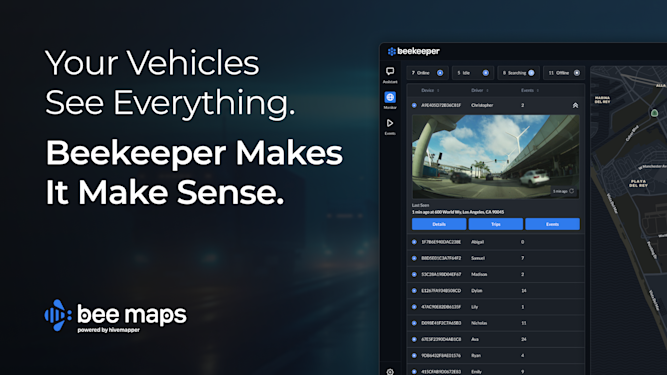The Latest Buzz
What Are the Limitations of GPS Technology?

Global Positioning System (GPS) is one of the most impactful technologies developed in the 20th century. This ground-breaking technology has enabled precise location tracking in personal smartphones and autonomous vehicles. Before its advent, for example, physical paper maps were the main tool for navigating long, unfamiliar road trips. This meant solo drivers would have to read the map while keeping their eyes on the road—not very safe, right?
Fast forward to 2024 and when was the last time you used a paper road map to navigate during your vacation
GPS technology still faces several challenges that can impact accuracy and reliability. For most casual users, the current state of GPS is sufficient. For others, like developers of GPS mapping, logistics, and autonomous driving solutions, the limitations are a more severe issue. This article will illustrate some of the issues facing more advanced uses of GOS and their implications.
What are Some Limitations of GPS Technology?
Signal Interference in Important Locations
One of the most significant challenges facing GPS technology is signal interference. GPS relies on line-of-sight (LoS) signals from satellites orbiting Earth. LoS signals are easily disrupted by physical obstacles like tall buildings, tunnels, dense foliage, and even adverse weather conditions. For example, in urban environments, known as "urban canyons," tall buildings can interrupt or reflect LoS signals, resulting in inaccurate positioning or loss of signal entirely. This is problematic for applications like self-driving vehicles, which rely on precise location data for safe navigation.
Signal Delays Can Limit the Accuracy of GPS
While GPS can provide location data with a high degree of accuracy—often within a few meters—it is not always precise enough for applications that require centimeter-level accuracy, such as precision agriculture or certain aspects of autonomous driving. Atmospheric conditions and satellite geometry can influence GPS signals. Variations in signal travel time through the atmosphere can cause slight errors, known as "signal delays," which reduce the accuracy of location data. To overcome these issues, technologies like Real-Time Kinematic (RTK) GPS and Differential GPS (DGPS) can provide better positioning, but often require additional infrastructure and can be expensive to implement.
Multi-path Errors
Multi-path errors occur when signals bounce off buildings in urban canyon environments, water bodies, or the ground before reaching the receiver. This slows signal reception causing inaccuracies in positioning. These errors are common in dense urban environments, making it difficult for GPS receivers to distinguish between the direct and reflected signals. This is challenging for some applications that require precise navigation, such as autonomous vehicles and delivery drones.
Power Consumption
GPS receivers can be power-hungry, especially when tracking a moving target or providing real-time data. This is a challenge for devices with limited battery life, such as smartphones, wearable devices, or small autonomous robots. As a result, developers often need to balance the frequency of GPS updates with power management strategies to ensure that the device can operate for extended periods without draining its battery. This is particularly important for applications known to drain batteries, like fitness trackers or delivery drones.
Vulnerability to Spoofing and Jamming
GPS signals are also susceptible to intentional disruptions such as spoofing and jamming. Spoofing involves sending fake GPS signals to a receiver, causing it to believe it is in a different location.
Jamming, on the other hand, occurs when a device deliberately emits signals that interfere with GPS reception. These attacks can have serious implications for industries that rely on it for navigation and timing, including aviation, maritime, and autonomous vehicles.
As such, enhancing the security of GPS systems and developing countermeasures against spoofing and jamming are ongoing challenges.
Dependency on Satellite Infrastructure
GPS technology depends on a network of satellites maintained by government agencies, such as the U.S. Department of Defense, which operates the system. This dependency means that any issues with the satellite network—such as maintenance, malfunctions, or even potential geopolitical conflicts—can impact GPS reliability. While alternative global navigation satellite systems (GNSS) like GLONASS (Russia), Galileo (European Union), and BeiDou (China) provide additional coverage, these systems also come with their own limitations and challenges.
Limited Functionality in Indoor Environments
GPS is primarily designed for outdoor use, and its performance diminishes significantly when used indoors. Signals struggle to penetrate buildings and other structures, leading to poor reception or no signal indoors. This can be challenging for applications requiring indoor navigation, such as in large shopping malls, warehouses, or underground parking garages. To address this limitation, many systems integrate GPS with other technologies like Wi-Fi, Bluetooth beacons, and inertial navigation systems to improve indoor positioning accuracy.
Emerging Solutions
Despite these challenges, ongoing research and technological advancements are improving accuracy and resilience. For example, combining GPS with other navigation systems like inertial measurement units (IMUs) can help maintain accurate positioning when GPS signals are temporarily lost.
Other advancements in satellite technology and the use of newer signals in modern GPS receivers are helping to reduce errors and improve overall performance. As autonomous vehicles, drones, and location-based services become more integral to our daily lives, the need for reliable and accurate GPS data will continue to grow.
Addressing these challenges will be a key milestone for creating even more robust navigation systems that can operate effectively in all environments.
Share Post


